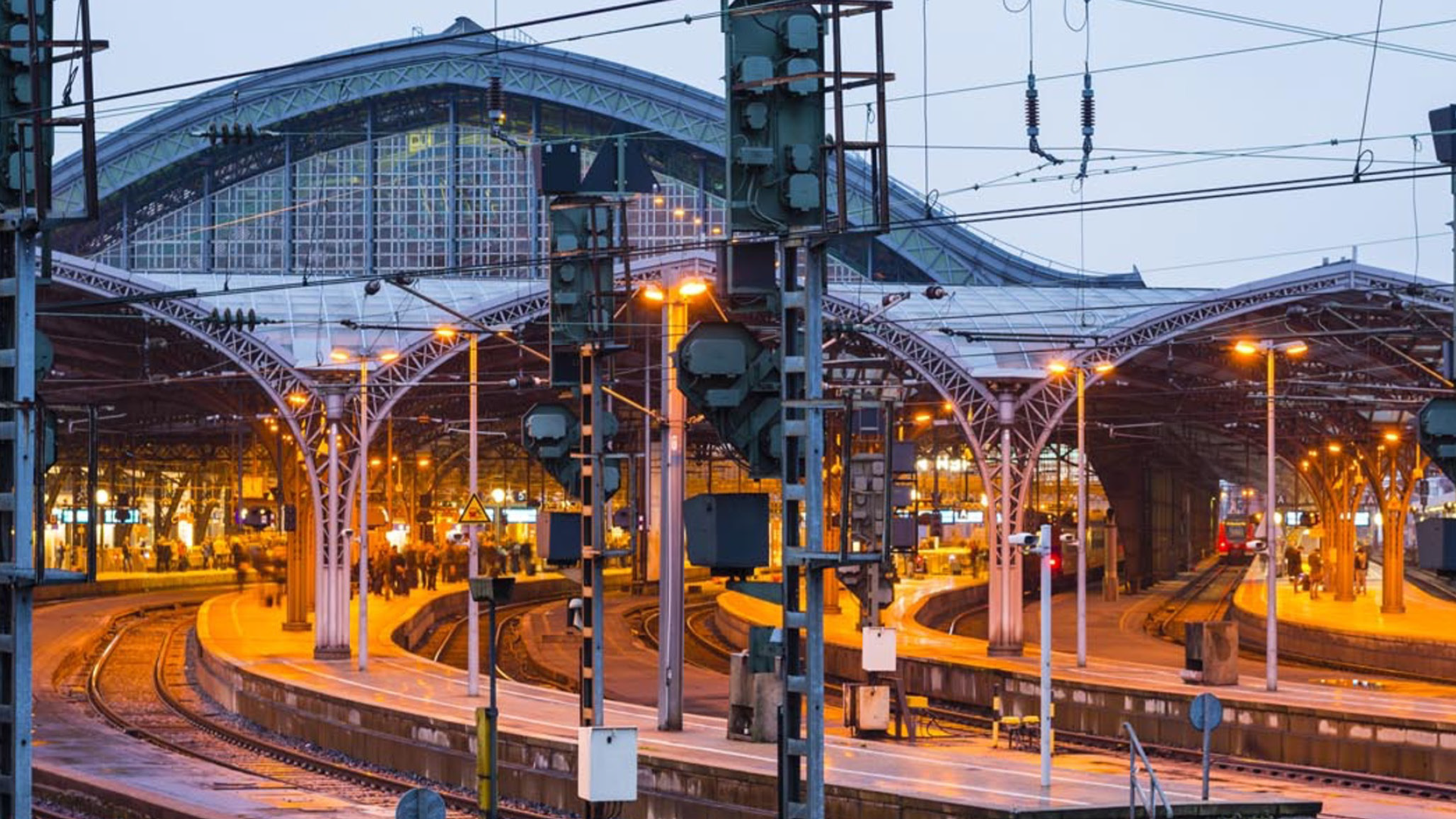
Publication
British Columbia sick note restrictions now in force
As of November 12, 2025, British Columbia employers are prohibited from requesting sick notes for certain health-related employee absences.


United Kingdom | Publication | May 2021
After a process which commenced in September 2018, and following a long delay caused by Brexit, national elections and a global pandemic, the Williams-Shapps Plan for Rail was finally published on 20 May 2021, setting out wide-ranging proposals for the reform of the rail industry in Great Britain. It describes itself as initiating “the biggest change to the railways in 25 years”, and represents a fundamental shift away from commercial operations to the delivery of passenger services. It comprises 62 commitments and 10 key outputs. Taken together, these seek to establish Great British Railways (“GBR”) as a single guiding mind for the rail industry in Great Britain, an end to fragmentation, the introduction of a new brand and identity and a variety of other measures designed to improve Great Britain’s railways.
We summarise a selection of the key changes below, and set out at the end of this briefing our initial observations regarding the Plan:
Overall, we anticipate that the main recommendations of the Plan will largely be welcomed by the industry. There are strong statements of belief in and continued commitment to the GB rail sector, reflected in the financial support provided during the pandemic and the clear commitment to major projects such as HS2 and East West Rail. It expressly contemplates growth, supported by further substantial investment and positive statements regarding the ongoing role of the private sector.
GBR will own and be responsible for operation of the rail network / infrastructure (including drawing up timetables and setting fares). It will run an integrated system to common / unified goals, to be detailed in a 30 year strategy, albeit (through regional divisions and local partnerships) calibrated to adapt to local needs/requirements. A key objective is to ensure that infrastructure and operational funding decisions are taken in a joined-up way.
GBR will subsume Network Rail (and Network Rail’s assets), the Rail Delivery Group and most DfT functions - but without any devolved administration / authority powers such as those held by Transport for Wales, Transport Scotland, and certain Passenger Transport Executives (which remain with those bodies).
ORR will remain in place, but with a revised focus, based on monitoring / reporting improvement across the sector; scrutinising the delivery by GBR of its objectives; and acting as an appeals body for TOCs, FOCs and open access operators where GBR is not applying policies fairly (including track access and charging). ORR will have the power to direct GBR to change decisions that are not in line with policy or the new rules-based access system underpinned by legislation.
ORR retains its position as safety regulator and there will be no immediate changes to safety and standards roles across the sector (including Rail Safety and Standards Board (RSSB), Rail Accident Investigations Branch (RAIB) and British Transport Police). However, the Plan contemplates a consultation on opportunities to “optimise the approach to safety”, which may result in changes to roles and accountabilities.
The Government will retain control of key funding decisions and has powers to appoint the GBR chairman, and set long term strategy for GBR (akin to the relationship between the London Mayor and TfL). Government will retain the “operator of last resort” responsibility and will therefore need to be comfortable with GBR’s activities.
GBR will be responsible and held accountable for a wider range of punctuality, quality, efficiency, safety and other goals outlined in the Plan. In addition to its role in setting GBR’s strategy, the Government will control the availability of funding streams to GBR, which are stated to be “conditional on meeting [its] mandates”. Ministers will hold GBR to account through a structured framework underpinned by legislation and will have powers to issue guidance and mandatory directions “on any matter at any time”, while retaining a measure of control over the framework for pay, including performance-related pay, at least for the Chair.
It is envisaged that GBR’s regional divisions will enter into partnerships with local authorities, to ensure that GBR’s integrated plans / actions remain responsive to local needs/requirements. These partnerships will need to allocate responsibility between the parties, and their success is likely to depend on a degree of cooperation and an alignment of views. ORR will have scrutiny over GBR and will act as the appeals body for TOCs, FOCs and open access operators, which will be particularly important given the statements relating to the new “rules based” access regime to be applied with regard to track access.
The Plan envisages continued private sector operator involvement in running passenger operations, although franchise agreements will be replaced by concessions. Operators will retain cost risk, but revenue risk will be removed (although, the possibility of retaining such risk (and other commercial freedoms) remains open in specific circumstances such as long distance operations). Payments to operators will be KPI driven - linked to (for example) punctuality, reliability, capacity, passenger satisfaction and information, revenue protection, cleanliness etc.
Tough measures and targets will be included to incentivise co-operation to improve performance across the network, although further detail is needed as to precisely how that incentivisation will be achieved. Additionally some targets may become stricter, to allow for changing passenger needs, government priorities and economic conditions mid-contract, and operators will need protection from the cost consequences of this. The Plan envisages that the arrangements will “lower the barriers of entry”, allowing other entities to enter the sector, although some operators may find the lack of commercial freedom unattractive. It is envisaged that the current ERMAs and National Rail Contracts will provide stepping stones to the new concession style Passenger Service Contracts, which are expected to be implemented from 2022.
The Plan contains explicit commitments to support the rail freight market and recognises its national importance (and recovery) during the pandemic and its ongoing importance to the reduction of transport greenhouse gases and the achievement of government “green” targets.
Measures announced include: the imposition of critical safeguards to ensure fair track access for FOCs, under a new “rules based” regime to be underpinned by legislation and which cannot be altered by GBR’s sole initiative (such regime to be designed in partnership with the market as part of a wider track access framework consideration, with ORR as the appeals body ensuring that GBR applies policies fairly); a statutory duty on GBR to promote rail freight to “secure economic, environmental and social benefits for the nation”; a requirement for government guidance on its freight priorities to be issued as part of each funding settlement; a commitment to work with the market to consider vital network enhancements that increase freight capacity or market growth (listing examples at Ely North junction, Port of Felixstowe and locations for future strategic freight interchanges); creation of a GBR national freight coordination team as a single point of contact and embedding strategic decision making into the GBR 30 year strategy; and a requirement for government to set a freight growth target (as in Scotland). DfT envisages that together these measures will strengthen the position of rail freight on the network and create growth opportunities.
Beyond the expected overall improvements to Great Britain’s rail industry outlined in the Plan, there are no changes explicitly announced which directly impact the position of rolling stock suppliers, maintainers and lessors. In fact, there is an explicit statement to the effect that the reforms “do not assume any direct change to the current industry model for procurement of train fleets and maintenance”, as well as other general statements that DfT is “determined to [maintain] private involvement and private finance”.
While not assuming such direct changes to the current industry model for fleet procurement and maintenance, the Plan also indicates that the government will work to “assess options for reliable delivery and value for money [for taxpayers and passengers]”. The precise meaning of this is unclear, but it points to possible further deliberation in this area or may reflect an intention for GBR to have more direct involvement in the procurement of commercial arrangements going forward than it had during the franchise era.
Clearly the Plan intends to achieve an up-to-date, clean, timely and cost efficient/effective rail service to the public.
The proposed structural changes are designed to unify, simplify and optimise service delivery, by (amongst other things) reducing fragmentation, aligning objectives and allocating clear responsibility and accountability.
GBR will be focused on the full passenger experience not just on the trains (and their performance), but also at stations and in respect of the fares / ticketing process (where substantial rationalisation and digitalisation is envisaged).
The Plan contemplates that GBR will bring forward costed options to decarbonise the entire network as part of its 30 year strategy. Electrification is considered the main way of achieving decarbonisation on “the majority of the network”, but battery and hydrogen-based solutions will be trialled where electrification is an uneconomic solution.
There is recognition that this will require “more appropriate regulation”.
Publication of the long-awaited plan will be met with a measure of relief across the industry and we expect it to attract largely positive reactions. Inevitably perhaps, detail is lacking as to precisely how certain objectives will be achieved and there is clearly a long way to go. It will not be possible to implement the Plan’s recommendations immediately and it will take time to develop the contemplated “Whole Industry Strategic Plan”, the 30 year strategy, to draft and implement the considerable volume of new legislation required, to consult further where contemplated, and to negotiate the new agreements required with the Welsh government and other local bodies.
However, the Plan does provide a roadmap for change and should be welcomed accordingly. Those with long-term involvement in the rail industry will note that the Plan is not the first attempt to remedy the ills of Great Britain’s railways. We published a client briefing following the 2004 White Paper “The Future of Rail”, and our conclusion to that client briefing is instructive:
“The underlying principles of the proposals set out in the White Paper should produce a clearer, more streamlined structure to the railway industry. The proposals seem to limit the commercial opportunities for growth which were a feature of privatisation, and the Government has sought to take control of railway strategy and to achieve a single point of accountability through Network Rail. In creating this single point of responsibility, the review seeks to break the current adversarial relationship between Network Rail and the TOCs and pave the way for increased co-operation."
These conclusions from 2004 could equally be applied to the Plan announced yesterday, but there are grounds to believe that this time there is a real impetus for lasting and positive change.
We should be delighted to discuss the Plan further with you. Please contact Tom or Simon directly.

Publication
As of November 12, 2025, British Columbia employers are prohibited from requesting sick notes for certain health-related employee absences.

Publication
The federal government’s recently released Canada Strong Budget 2025 (Budget 2025) has proposed several measures with implications for federally regulated employers.

Publication
On 13 November 2025, the Financial Reporting Council (FRC) published its Annual Review of Corporate Governance Reporting. This analyses reporting trends and practices among 100 UK-listed companies against the 2018 UK Corporate Governance Code (Code).
Subscribe and stay up to date with the latest legal news, information and events . . .
© Norton Rose Fulbright LLP 2025